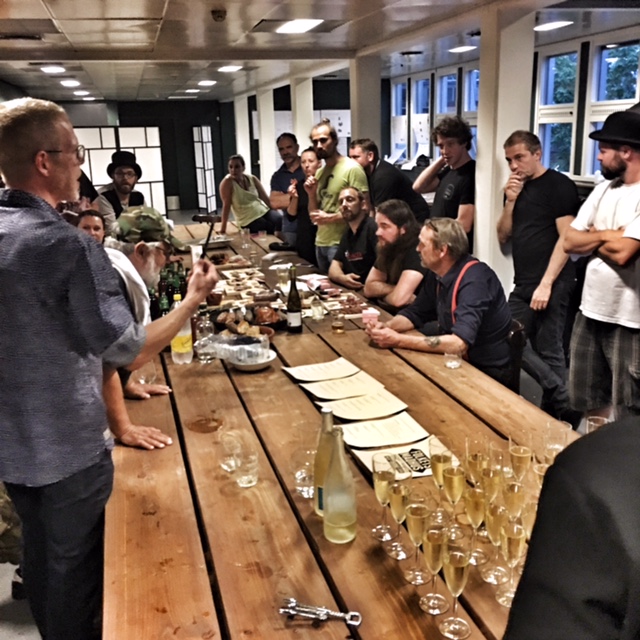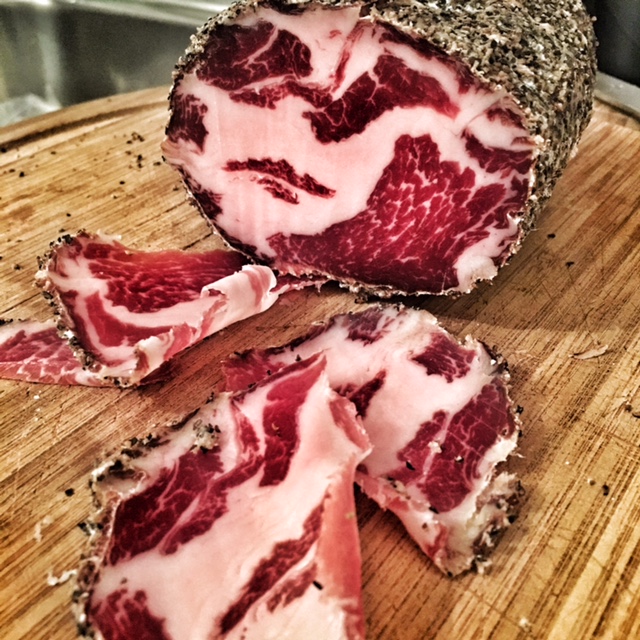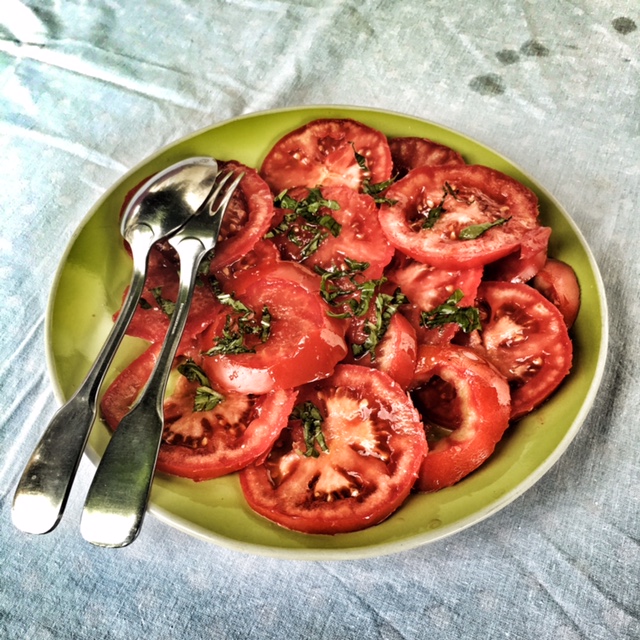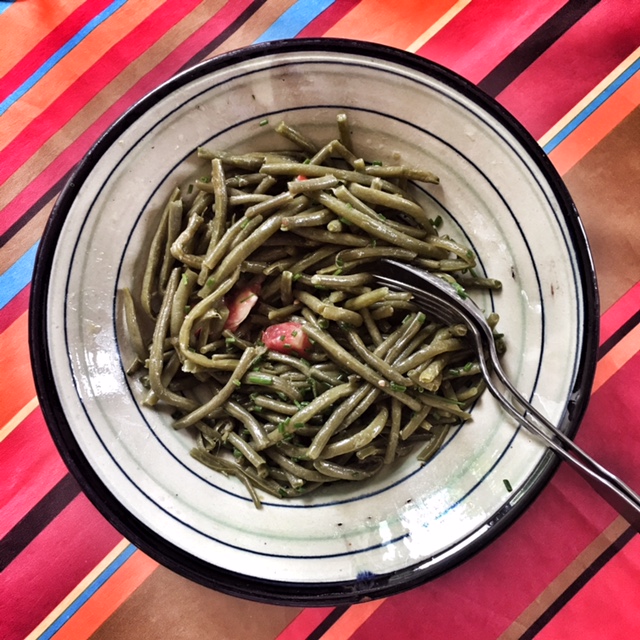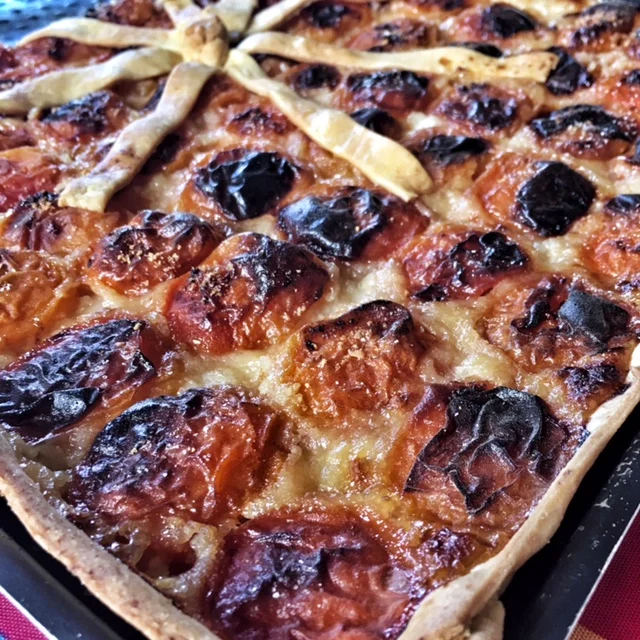I arrived mid-morning on Monday to Osso Carnicería, strapped down with my backpacks and sweating profusely. I had gone from the extreme cold of Denmark to extreme humidity of Peru, and I was starting to question if I’d packed correctly.
As I entered the shop, Renzo Girabaldi stood next to the counter chatting with some patrons. God, I was nervous. I mean, this was the guy I had wanted to work with for over three years. He and Dario Cecchini were my idols and the key reasons I became a butcher. And here he was, standing before me and offering the opportunity to apprentice with him for a few months.
A peak into one of the dry aging containers in the carnicería.
I didn't need to be anxious - Renzo was very welcoming. After he finished his conversation, we ventured upstairs to the roof where his office was located. After conversing a bit, Renzo laid out his suggested two-month plan.
- an intro week on the cutting table in the butcher shop
- two weeks in production, making hamburgers, chorizos, and other value-added products.
- a week ghosting Osso’s CFO Alejandro, analyzing logistics.
- two weeks of working at the adjoining Osso Restuarante
- two weeks working at Dondoh, a new restaurant collaboration of Renzo's.
When it came to accommodations, nothing had been planned prior to my arrival. Renzo and Alejandro went to work on a place for me to crash. In the meantime, I’d have to sleep at the butcher shop - not the first time that had happened.
Renzo had to jet - literally. He had less than 48 hours in Lima before he departed for a culinary gig in Moscow for 11 days. I’m thinking I’m at the right spot.
I went to the front counter, knife bundle in hand. The rest of the afternoon, I’m jumped in where I could help, mostly removing fat from pig skin. Renzo is a nose to tail man as well - he believes in saving every single little bit of fat. The hard fat is sent into hamburger production. The soft fat, the one that is usually thrown away or declared “too much work to remove” by some, is converted into Manteca de Cerdo, or Pork Lard. Renzo uses it all.
When dealing with dry aged meat, you have to trim off the outside surfaces - mostly dried meat and mold - in order to see the beauty hiding within.
My first week was spent in the shop, working around the large wooden cutting table. I was under the direction of César and Jose, Renzo's two main butchers. Every morning we started by setting the case - I took note of all the cuts, trying frantically to remember all the names in Spanish. My usual tasks were cleaning tenderloins, skirt steaks, and chorizo displays. Once the shop case was merchandised, we begin breaking down carcasses to fulfill the restaurants’ needs as well as wholesale orders.
José reminds me of some of those super quick butchers you see on YouTube: he can cut a mile a minute because he has done it a million times. He has been kind enough to share some his cutting "secretos" with me. José has taken a liking to my set of F. Dick knives. My large flat honing steel is now the preferred one at the table, and my boning knife stays busy, even when I'm on lunch break.
One of my morning tasks at Osso has been to restocking the sausage treys. Every shop displays their meat a little differently so I've tried to learn quickly - I still am having difficulties deciphering between the eight different sausages.
The guys at the cutting table realized I knew my cuts and that I knew a decent amount of Spanish. They wanted to learn English. By the end of my third day, my nickname had become “teacher.”
Or Jack "Sparrot." Not Sparrow.
Massive ribeyes headed to the restaurant.
I've enjoyed breaking out my Spanish again, but damn, I didn't remember it being this difficult! It doesn't help that my brain has a little Danish, French, or Italian rolling around in there.
I am fascinated by the setup at Osso, especially all the dry aging facilities. Cèsar demoed the famous sake-infused dry-aged ribeye on the DonDoh menu. After cleaning up the strip loin, he wrapped the entire hunk of meat in dried kelp leaves, then tied it up using medical netting. Cèsar carefully saturated the netting with just the right amount of sake before storing it in the dry-aging cooler.
César working the medical netting over the kelp-covered strip loin.
My second week was supposed to have been in production, making massive amounts hamburgers and chorizos. José and César pulled me up to the shop every morning - maybe they enjoyed my insanely sharp knives, or I was actually helping out.
I hope it was both!
Osso, just like the many European butchers I've met, deals with a bunch of quality pork meat. To supply super markets with artisanal chorizos, you need to have a lot of it!
This company has an incredible brand and top notch packaging!
Sidenotes:
Save the Gringo 1:
After a trio of nights in the butcher shop, Renzo and Alejandro fixed me up with my own pad - a small single room in La Molina, roughly a thirty-minute walk from the shop. I walked for the first week, but the humidity and the insanely cheap cab fare finally won me over. I'm very appreciative of the room. They didn't have to help out some gringo stranger from Texas, but they did.
Save Gringo 2:
It was about this same time I noticed an alarming number of bug bites on my arms and legs. For weeks, I had heard about "chinchas" or bed bugs down in South America - that was my first thought! I mentioned it to Renzo, and 15 minutes later, a company employee whisked me away to a public health clinic down the street to get treated (turns out it was an allergic reaction to a mosquito bite). Again, Gringo in trouble and Renzo saves the day - incredibly generous.
The Carnicería crew getting together for a group picture after my first week in La Molina.
I don't know what it is about staff meals, but I love them. Perhaps its the regathering of the troops to break bread together - the bond of a shared meal. At the Reata, I loved the tacos that the guys served up after the doors closed for the night. Fleishers staff meals in Red Hook were always spectacular thanks to Jason V. Here, a pan-fried potato stuffed with boiled eggs and minced chorizo meat. As with every staff meal here, there is rice and some sort of flavorful and fresh juice.























